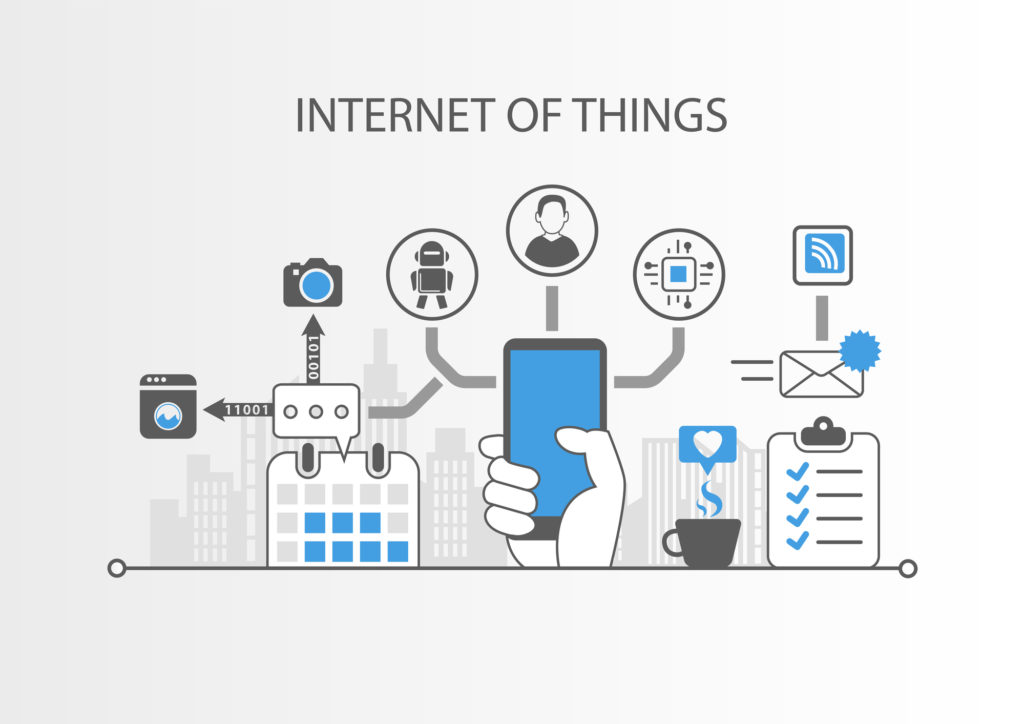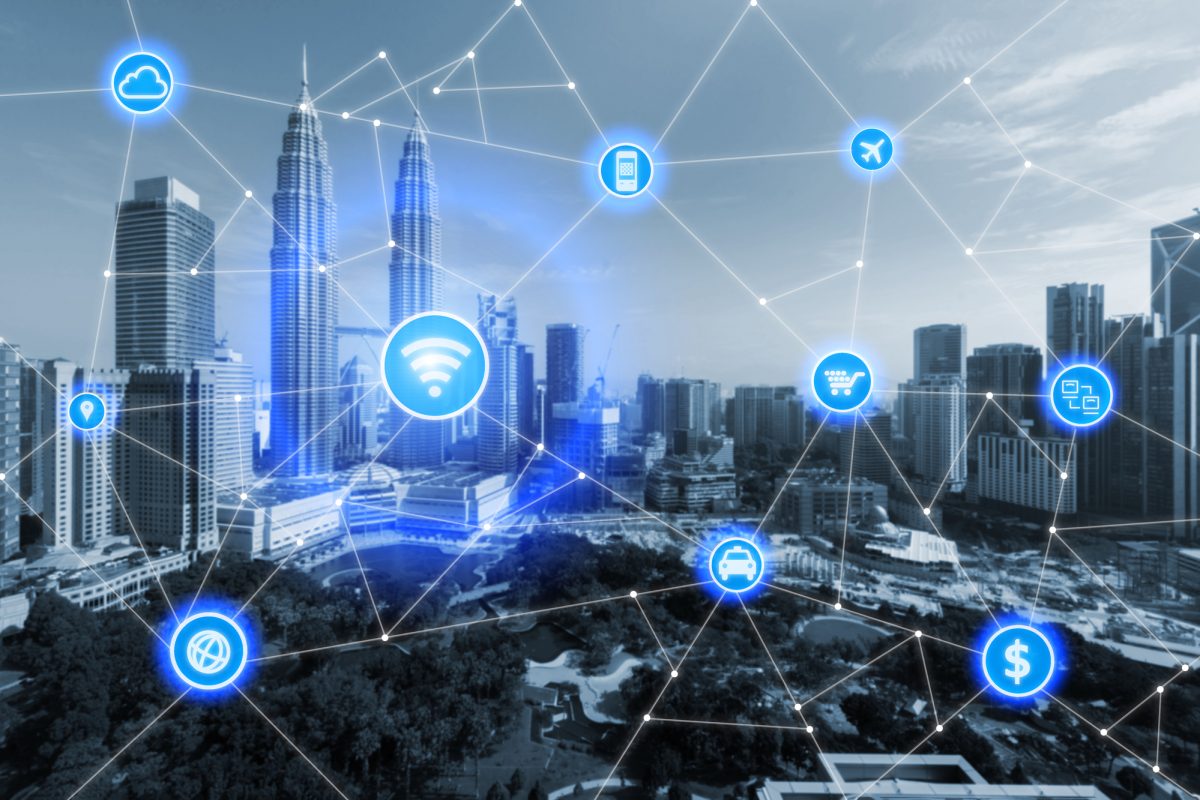The term “internet of things” (IoT for short) has been a buzzword for quite some time now. Like most buzzwords, it tends to get ignored and dismissed. However, this little catchphrase has been turning into a concrete reality over the last few years. With so many companies taking advantage of its benefits, there is little doubt that IoT and the automation it brings will be the future of business.
What Does “Internet Of Things” Mean?
This term encompasses all the “smart devices” that are currently on the market. In a more general sense, it represents a network of interconnected devices. Many people envision a future in which all electronic devices are connected to the internet, allowing them to perform their functions automatically. From what we see at present, this vision wasn’t too far from the mark. The term “smart device” also refers to an IoT device, in case you were wondering.
 A Few Examples of IoT Devices And How They Can Help
A Few Examples of IoT Devices And How They Can Help
You’ve probably seen a few ads for “smart home” devices that automate your everyday tasks. For instance, there are smart coffee pots that will automatically brew a cup when you wake up in the morning. However, our emphasis is on the use of IoT for business matters, so let’s look for some examples of such.
Smart Locks
Although digital intrusion has become very common, old-fashioned burglary still happens quite often. In fact, most statistics seem to indicate that businesses are burglarized more frequently than homes. According to these numbers from the UK, 24% of businesses reported having dealt with a break-in. For residential homes, the figure was 4%. Thus, we can see that burglary will continue to be an ongoing problem for businesses.
Smart locks allow the user to control access remotely, usually through a smartphone app. Not only can they be locked and unlocked remotely, but they can also keep logs of who comes and goes. They can also automatically call the police if an intruder is detected. Because businesses always need better security, you can bet that smart locks will continue growing in popularity.
Smart Thermostats
As more businesses move away from brick-and-mortar shops, their infrastructure costs are likely to go down. Paying the electric bill in a public place can be an expensive proposition, and it’s just too much for some to handle. However, smart thermostats give business owners a way to avoid these high costs. How expensive are we talking here? Based on these government statistics from 2018, commercial electric bills tend to be at least $400 per month. The highest figure we see is $3,119 per month (in Washington DC).
Smart thermostats allow the user to control the temperature remotely, but there is more to it than that. They will also automatically adjust themselves in response to predetermined events, which means a consistent temperature in your building year-round.
Voice-Activated Control Devices
We would be negligent if we didn’t mention the rise of AI in this article. Digital assistants (like Apple’s “Siri” program, for instance) have become very popular in recent years, as they can save you a lot of time and effort. Thus, it was only a matter of time until this technology expanded to include control over many other things. Many people will use a digital assistant to perform internet searches, but they can do a lot more than that.
If you’ve ever watched “Star Trek,” you’ve probably wished for a voice-activated computer. These have existed for a long time, but they weren’t very accurate or useful until recently. Based on a survey from last year, 85% of IoT companies said that they planned to deploy more voice-activated options.
Intelligent Inventory Control Devices
As with many other things on this list, intelligent inventory control is a slight modification of existing technology. However, its implications could be far-reaching indeed. RFID tags (those little anti-theft devices you keep finding on products) use radio frequencies to power tiny transmitters. These transmitters can then relay information to an output device.
When you combine the use of RFID with the use of efficient software, you can create a level of close tracking and accountability that would never have existed in the past. Not only does it improve security, but it can be used to aid important business decisions. For instance, some goods will be used/sold more quickly than others. That means they will have to be restocked more often. By tracking the rate of loss, you can determine the ideal resupply schedule for each product.
Popularity And Problems Of IoT
There is no doubt that IoT devices are getting a lot more popular, but there are also many people who have doubts about them. While some of these criticisms are just naysaying, there is one criticism that seems to be valid: The security risks that come from an increased level of interconnectedness. While normal people can use this technology to improve efficiency, hackers and other criminals can use them as paths of attack.
For some examples of this, we might mention instances in which hackers have taken over smart devices. In 2016, hackers used a botnet to carry out the biggest DDOS attack in history. By compromising a variety of smart devices (including digital cameras and DVR players), the attackers were able to create a huge and ever-expanding web of control. By having all of the devices attempt to connect at the same time, they brought down most of the network.
In spite of this, IoT devices have become more and more popular across a wide range of businesses. According to this report from Gartner (a respected research/advisory company in this field), the use of IoT devices will grow to 5.8 million endpoints in 2020, which would be a 21% increase as compared to 2019. These predictions are based on reliable figures which show a quick rise in this area of business.
Conclusion
There seems to be no doubt that IoT is going to be a part of our future. While there are some very real security problems to solve, the increased efficiency that it provides will be too tempting for many companies to resist. When you consider the labor-saving aspects of this technology, its uses become even more obvious. We hope that you have enjoyed this article and that you will fill out the contact form below to learn more.







